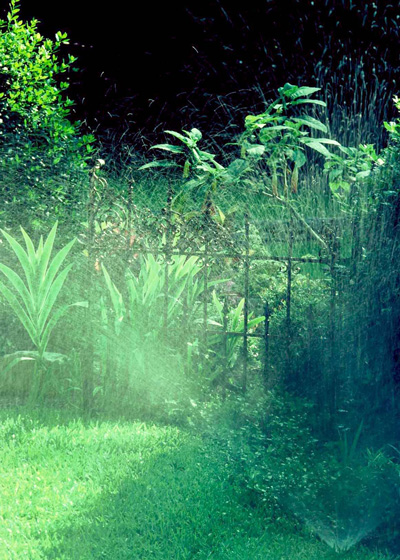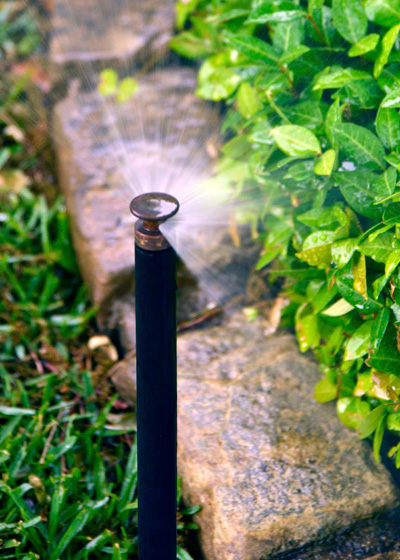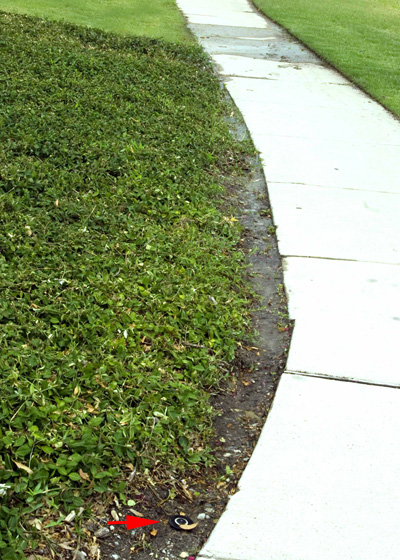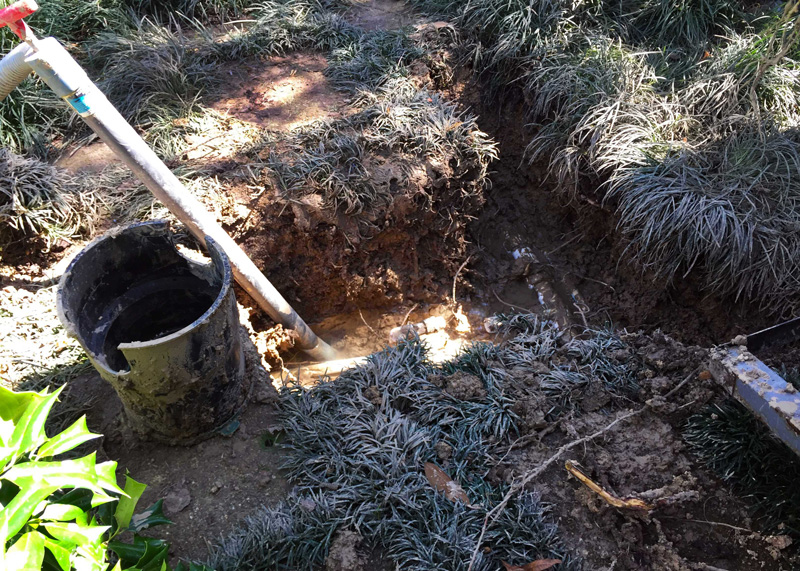Sprinkler Tune-Up
We’ve had an automatic sprinkler system for 44 years. Actually, three different systems. The first one I put in with my father-in-law. We decided I might want to hire a professional from that point forward.
Over those years, I think gremlins have come to live with us in the winters. They’ve made their presence known by the bad deeds they’ve left behind. I’m going to describe them for you in the hopes that maybe you can learn what to look for as spring unfolds.


Check out your system…
Pick a fairly warm day. Lace up your rain boots and put on a slicker. Have someone else inside put the timer through its paces while you watch all the stations and mark any problems with wire flags.
• Clocks that are set to the right time. This may be as simple as a 1-hour adjustment because of the time change, or the clock may be off by a random amount due to a power outage. It’s important that you have it set properly so that your system will run at the desired time. This should be an easy adjustment.
• Heads that are chewed up or missing. Dogs and squirrels are the two biggest offenders here. I always find three or four heads gnawed to shreds. That’s an easy repair as long as you match the original head and get it positioned correctly.
• Heads that are blocked by recent years’ growth. It might be from growth made over the course of last summer and fall, or it could be from brand new growth this spring. Either way, you need to trim the plants or put an extender on the riser.
• Pipes that have gotten broken beneath the soil line. This can happen because of big changes in soil moisture (especially with clays), or because something has rammed into one of the risers.

• Valves that aren’t closing properly. This is a difficult one. You will notice a wet spot in the yard or on pavement near the lowest head in the station. That’s where the water will drain slowly from the valve that is leaking. Most people will first try to dig up that head only to find that there is no problem with it. That’s when you realize that the valve is not closing completely. The valve that’s causing the issue may be 50 feet away.
Things that may need professional attention…
Most of us draw a line at some point. There are things we just prefer to leave for a licensed turf irrigator. Simple repairs are fine for a DIY kind of person, but complicated tasks need more experienced hands and eyes. Regulations may even require it.
• Missing valves. This one is really frustrating for me. For one thing, it’s because I usually can’t find the installation plans when I need them. Valves seem to be sucked up by my soil. Professionals have equipment that help them track down valves through electrical currents.
• Gasket or valve replacement. As a gasket ages or gets a piece of sand or small gravel caught in it, it doesn’t seat properly when the valve closes. That’s when leaks begin to develop. A repair person begins by opening the valve up and checking the gasket. Sometimes you can merely clean it, or, in a worse case, replace it. My luck, however, is usually that the valve is shot and must be replaced entirely.

• Major pipe issues that require complex fittings. Pipe glue dries out given enough years, especially if the soil moves a great deal during dry or cold weather. Occasionally, it will impact large pipes. They are not very flexible, and repair and replacement are much more challenging. It’s amazing to me to watch professionals do this work quickly and efficiently. (That does not describe Neil doing it!)

• Installation of “smart” controllers. That term describes timers that can be programmed in many different ways so that they will monitor weather conditions, soil types, plant types, and many other variables to determine when and if watering will occur. The first models encouraged homeowners to do the work themselves. I tried that, and I guess they were talking about “smart” homeowners. Apparently I was not one. I would recommend you have a professional do this installation. It’s not that expensive. And they really do pay for themselves.
